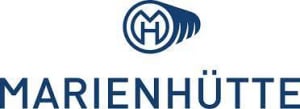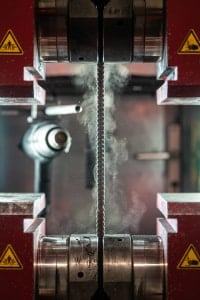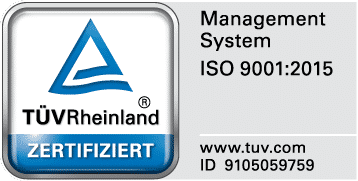Steel and rolling mill Marienhütte: Reinforcing Steel Made in Austria
Concrete is one of the most widely used building materials in the world. In Austria, more than half of all construction work is carried out using reinforced concrete. This makes concrete as well as reinforcing steel an important material for the country’s economy. Find out more in the LIMS user report.
Stahl- und Walzwerk Marienhütte GmbH, with its production site in the center of Graz, is Austria’s only manufacturer of high-quality reinforcing steel. Reinforcing steel Made in Austria. Accordingly, the company sees its responsibility in reliably supplying the Austrian construction industry with high-quality reinforcing steel as a high priority. For quality assurance in the laboratory, the company has relied on the LIMS from Fink & Partner since 1994.
Annual production of over 400,000 tons of reinforcing steel for the construction industry
Marienhütte produces over 400,000 tons of reinforcing steel annually. Production is subject to external and internal monitoring to ensure compliance with the quality standards of national standards in the construction sector. Marienhütte, with 300 employees working almost continuously in a 4-shift system, has a long tradition in the production of high-quality reinforcing steel and mainly supplies bending plants and precast factories in Austria, Germany, the Czech Republic, Slovakia, Hungary, Slovenia, and Croatia.
Picture: Mathias Kniepeiss
Marco Lackner, Head of Quality Assurance at Marienhütte
Picture: Mathias Kniepeiss
Standardized analysis process for quality assurance in steel production
Reinforcing steel from Marienhütte is a high-tech product that meets the highest requirements for product quality and workability. The steel undergoes a rigorous quality assurance process that ensures each shipment meets the highest standards. The company’s production processes result in high-quality products that meet or exceed all required specifications.
To ensure the quality of the final product, chemical analyses are carried out throughout the production process at the electric steel mill. Steel produced by Marienhütte is obtained 100% from scrap. The composition of the melted scrap is checked on the basis of a pre-sample using the Optical Emission Spectrometer (OES). The results determine how to proceed. In step 2, the melt is run to a ladle furnace where alloying elements are added to the melt. After successful homogenization, the melt is analyzed again in the OES. During continuous casting, the chemical analysis is repeated. The company produces a batch of reinforcing steel every 40 to 45 minutes in this way – 35,000 chemical analyses per year have to be managed.
According to Marco Lackner, head of quality assurance at Marienhütte, the large volume of data to be managed was also the reason for deciding to introduce a LIMS back in 1994:
“Even then, with a significantly lower production volume, it became apparent that the data to be managed and also the requirements of our customers, approval bodies and certification bodies would increase more and more. Today, we are happy with the decision to have introduced the LIMS, as we can also realize large production volumes while complying with the quality standards valid today, as well as ensuring secure, fully traceable documentation.”
LIMS as an important pillar of digitization
For Marco Lackner, however, the LIMS also offers other significant advantages independent of the pure production process. Managing data is an important aspect for him, but it becomes particularly exciting when it comes to evaluating the data obtained and using it accordingly: “A LIMS gives you the opportunity to recognize trends at an early stage and, above all, to recognize dependencies and react to them in order to optimize processes, for example.”
For him, processes that are as automated as possible and professional data management are also a way of dealing with the growing challenge of “skills shortages in the steel industry.”
“Topics such as ‘artificial intelligence, ‘automation’ and precisely also professional data management in the form of a LIMS will certainly occupy us even more intensively in the steel industry in the future. It is becoming increasingly difficult to recruit trained specialists for the steel industry. Targeted process automation in the steel and rolling mill can counteract this problem, at least to some extent.”
A decisive gain in knowledge thanks to the merge function in LIMS
According to Marco Lackner, the LIMS provides the greatest benefit when data from different sources are combined. At Marienhütte, for example, the analysis results of the batch in the steel mill are merged with the mechanical parameters of the rolling mill and evaluated. All results of the entire manufacturing and rolling process can thus be displayed with batch accuracy and with just one click.
“The complete production process can be traced in this way – this provides us with insights that we no longer want to do without,” confirms Marco Lackner.
Picture: Mathias Kniepeiss

Philip Moerke, CEO with extensive experience in LIMS software, combines technical expertise with a clear vision for the future of laboratory information management. His commitment to developing user-friendly LIMS solutions has helped to make laboratories more efficient and data management more accurate. With a deep understanding of the needs of modern laboratories and a hands-on approach to problem solving, Philip Moerke is a trusted partner for laboratories looking for innovative solutions. He is known for his ability to communicate complex technical concepts in an understandable way, making him a valued expert in the industry.
![[FP]-LIMS Software](https://fp-lims.com/wp-content/uploads/2020/06/Fink-Partner-LIMS-Software-Firmen-Logo-e1592470427959-300x250.png)






